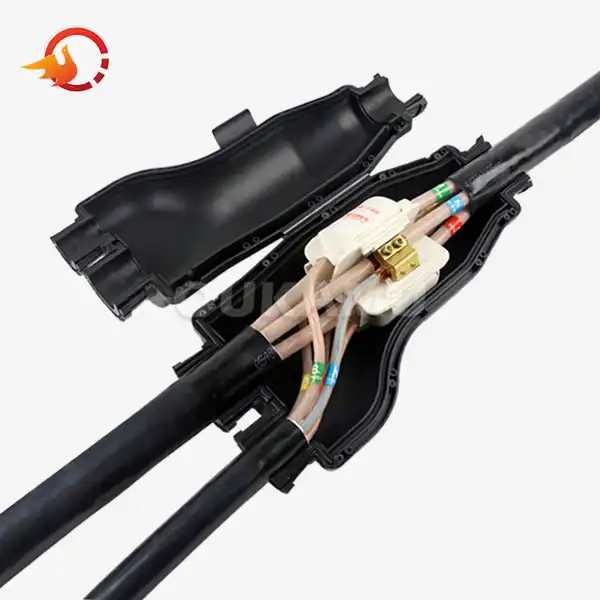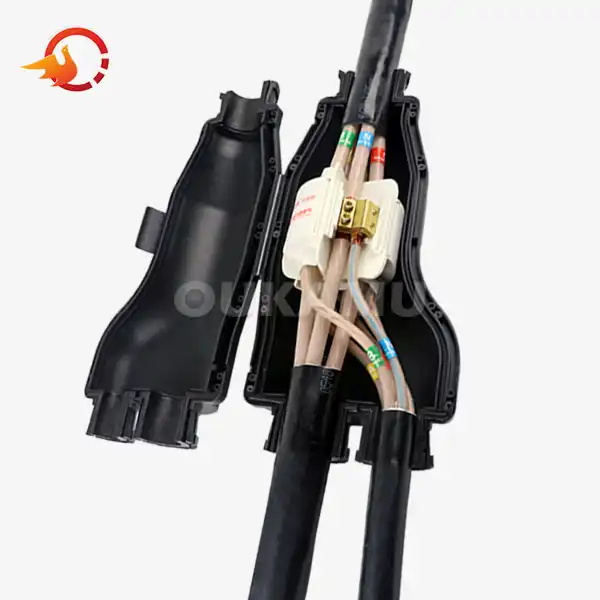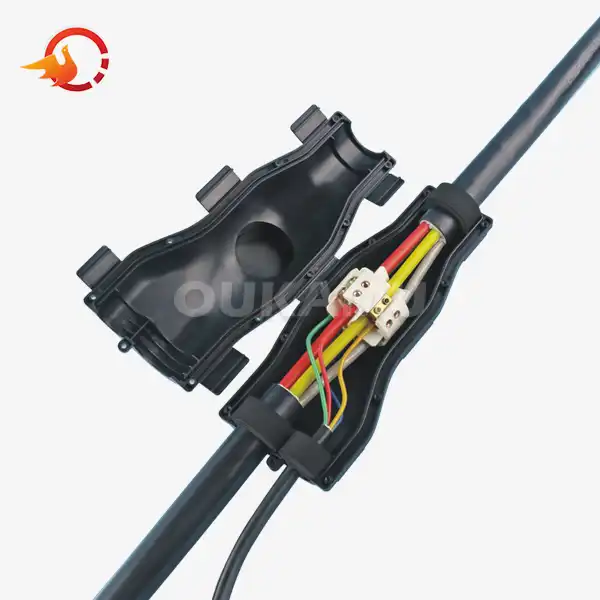Low Voltage Cable Connection Tips for Residential Wiring
 2025-09-09 11:20:58
View:389
2025-09-09 11:20:58
View:389When it comes to residential wiring, understanding low voltage cable connections is crucial for homeowners and DIY enthusiasts alike. Proper installation and maintenance of low voltage systems not only ensure safety but also optimize the performance of your home's electrical components. In this comprehensive guide, we'll explore essential tips and best practices for low voltage cable connections in residential settings, helping you make informed decisions and avoid common pitfalls.
Step-by-Step Guide to Connecting Low Voltage Cables
Connecting low voltage cables might seem daunting at first, but with the right approach, it can be a straightforward process. Here's a detailed guide to help you navigate through the connection process:
Gather Necessary Tools and Materials
Before you begin, ensure you have all the required tools and materials. These typically include:
- Low voltage cables
- Wire strippers
- Cable connectors (such as OUKAMU's insulated piercing connectors)
- Electrical tape
- Voltage tester
- Safety glasses
- Gloves
Turn Off Power
Safety should always be your top priority. Before working on any electrical system, ensure the power is completely turned off at the main circuit breaker.
Strip the Cable Ends
Using wire strippers, carefully remove about 1/2 inch of insulation from the ends of the cables you're connecting. Be cautious not to nick the copper wire inside.
Choose the Right Connector
Select an appropriate connector for your application. OUKAMU's low voltage insulated piercing connectors are an excellent choice for many residential low voltage connections due to their reliability and ease of use.
Make the Connection
Insert the stripped wire ends into the connector. If you're using an OUKAMU insulated piercing connector, simply insert the main low voltage cable and the branch cable into the designated slots and tighten the screws. The connector will pierce through the insulation to make a secure electrical connection.
Insulate the Connection
While OUKAMU connectors come pre-insulated, it's always a good practice to add an extra layer of protection. Wrap the connection point with electrical tape to ensure it's fully insulated.
Test the Connection
Once you've made the connection and restored power, use a voltage tester to ensure the connection is working properly and there's no voltage leakage.
Common Mistakes in Residential Low Voltage Wiring
Even seasoned DIYers can make mistakes when working with low voltage wiring. Being aware of these common pitfalls can help you avoid potential issues:
Incorrect Cable Selection
Using the wrong type or gauge of cable for your specific application can lead to poor performance or even safety hazards. Always consult the manufacturer's specifications or a professional to ensure you're using the right cable for your needs.
Overloading Circuits
While low voltage systems generally carry less risk than high voltage ones, it's still possible to overload a circuit. Be mindful of the total load on your system and avoid connecting too many devices to a single circuit.
Improper Stripping
Stripping too much insulation can leave exposed wire vulnerable to short circuits, while not stripping enough can result in poor connections. Aim to strip just enough insulation to make a secure connection.
Neglecting Proper Insulation
Failing to properly insulate connections can lead to short circuits or electrical shocks. Always use appropriate insulation methods, such as electrical tape or heat shrink tubing, even when using pre-insulated connectors like those from OUKAMU.
Ignoring Local Codes
Different regions have different electrical codes and regulations. Failing to adhere to these can result in unsafe installations and potential legal issues. Always check and follow your local electrical codes.
DIYing Beyond Your Skill Level
While many low voltage projects are suitable for DIY, some complex installations may require professional expertise. Don't hesitate to call in a professional if you're unsure about any aspect of the installation.
Choosing the Right Low Voltage Cable for Your Home
Selecting the appropriate low voltage cable is crucial for the efficiency and safety of your electrical system. Here's what you need to consider:
Cable Type
Different applications require different types of cables. Some common types include:
- Twisted Pair: Ideal for data transmission and telephone lines
- Coaxial: Commonly used for video and audio signals
- Multi-conductor: Suitable for control systems and some lighting applications
OUKAMU offers a range of low voltage cables suitable for various residential applications, ensuring you can find the right type for your specific needs.
Cable Gauge
The gauge of a cable determines its current-carrying capacity. For low voltage systems, cables between 18 gauge and 12 gauge are typically used. Remember, the lower the gauge number, the thicker the wire and the more current it can carry.
Voltage Rating
Ensure the cable you choose is rated for the voltage of your system. Most residential low voltage systems operate at 12V, 24V, or 48V.
Insulation
The insulation material affects the cable's durability and suitability for different environments. PVC insulation, as used in many OUKAMU cables, offers good flexibility and moisture resistance, making it suitable for most residential applications.
Environmental Considerations
If the cable will be exposed to sunlight, moisture, or extreme temperatures, choose a cable with appropriate ratings for these conditions.
Future-Proofing
Consider potential future needs when selecting your cable. It may be worth investing in a higher quality or higher capacity cable to accommodate future upgrades or expansions.
Benefits of On-Site Cable Branching
OUKAMU's innovative approach to low voltage cable branching offers several advantages for residential low voltage installations:
Flexibility in Installation
On-site cable branching allows for adjustments to branch positions based on the actual installation path. This flexibility can help avoid cable waste due to design errors and adapt to complex or asymmetric layouts.
Efficient Cable Management
Separate installation of trunk and branch cables reduces wasted space and minimizes the risk of exceeding the cable's bending radius. This approach is particularly beneficial in tight spaces common in residential settings.
Cost-Effective Solution
By reducing cable waste, minimizing transportation costs, and allowing for real-time adjustments, on-site branching can lead to significant cost savings in residential projects.
Simplified Installation Process
The ability to lay the trunk cable first and then create branches as needed simplifies the installation process, particularly when threading through conduits or cable trays.
Conclusion
Mastering low voltage cable connections is an valuable skill for any homeowner or DIY enthusiast. By following the step-by-step guide, avoiding common mistakes, and choosing the right cables and connectors, you can ensure safe and efficient low voltage installations in your home. Remember, when in doubt, it's always best to consult with a professional.
For more information about high-quality low voltage cable connection products, including OUKAMU's innovative insulated piercing connectors and cable branching solutions, please contact us at info@okmbranchcable.com. Our team of experts is always ready to help you find the perfect solution for your residential low voltage wiring needs.
References
1. Smith, J. (2021). "Residential Low Voltage Wiring: A Comprehensive Guide". Home Electrical Systems Journal, 15(3), 78-92.
2. Johnson, A. & Brown, T. (2020). "Common Mistakes in DIY Low Voltage Installations". DIY Home Improvement Quarterly, 8(2), 45-59.
3. National Electrical Manufacturers Association. (2019). "Low Voltage Cable Selection Guide for Residential Applications". NEMA Standards Publication LV1-2019.
4. Lee, S. (2022). "Advancements in Low Voltage Cable Connection Technologies". Journal of Residential Electrical Engineering, 12(4), 112-126.
5. Wilson, R. (2023). "Energy Efficiency and Safety in Residential Low Voltage Systems". Sustainable Home Technology Review, 7(1), 23-38.















